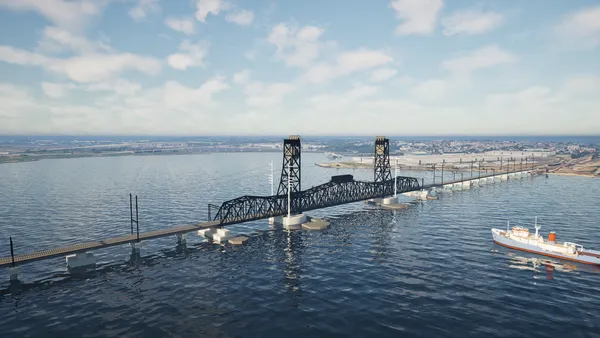Dive Brief:
-
Plans for President Donald Trump’s Advisory Council on Infrastructure are no more after the White House officially disbanded the panel, which was still being formed, Bloomberg reported.
-
The news follows the discontinuation of two other advisory councils this week — the American Manufacturing Council and the Strategic and Policy Forum — amid outcry over the president’s comments concerning white supremacists. The groups were already planning to disband in response, according to Reuters, which notes that the move indicates uncertainty within the respective communities toward Trump.
-
On Tuesday, Trump held a press conference to announce an executive order to streamline approvals for federally funded infrastructure projects. During a post-statement Q-and-A with reporters, the discussion shifted from infrastructure to the weekend's deadly protests in Charlottesville, VA, wherein the president caught flak for saying the responsibility for the violence lies with “both sides.”
Dive Insight:
Trump ran his campaign in large part on infrastructure, just as he did with manufacturing — yet both strategic advisory groups formed to help educate him in that mission have been cut in the span of a few days. While the groups aren't integral to securing legislation for infrastructure and manufacturing, their dismissal underlines tension between the White House and those respective industries.
An infrastructure spending plan is still thought to be something that could garner bipartisan support in Congress and be presented as a so-called win ahead of the 2018 midterm elections. Recent reports, however, suggest that legislators could hold off on addressing infrastructure until early 2018.
Infrastructure may not be so easy a get. So far, Democrats have resisted private spending on such a massive public works program and Republicans, for the most part, have opposed stimulus-like funding. The few details of Trump’s intended $1 trillion infrastructure spending program put forth so far include $200 billion of federal investment over 10 years, which will serve as the fuel for the private investment that will make up the difference.
Public-private partnerships will likely be a key project financing mechanism to achieving that goal — and they are already growing in popularity within the industry. State and municipal groups say P3s let them hand over tasks like operations and management to the private sector with expertise in that work while letting them spread the leftover funds to more projects. Critics, though, contend that P3s are only viable for revenue-generating projects, and much of the country’s infrastructure in need of replacement or repair has no such potential.
The latest executive order marks another small step toward more comprehensive direction from the president as to what a national building program could look like. The order calls for shortening the federal permitting and approvals process for “new major infrastructure projects” to two years, puts a single federal agency in charge of providing oversight on each project and calls for a tracking and scoring mechanism to gauge how efficiently a project is moving through the system.
The order also overturns the Federal Flood Risk Management Standard, which requires that federally funded projects built in areas subject to sea-level rise be constructed to higher resiliency standards to avoid the need for significant damage-related repairs in the future.















